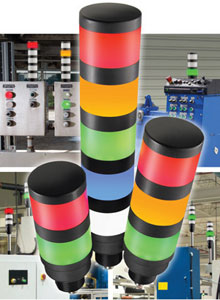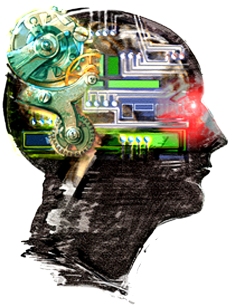 Robots mainly entertain or build electronics and cars |
Other than industry and research, they have mostly been for entertainment.
But a group of robotics researchers at University Jaume I in Spain is working on a robot librarian which could deliver the promise of a helpful bot.
The prototype has cameras, sensors and grippers so it can locate and collect a book. The hope is that one day teams of service robots could work in libraries.
Get a grip
The main issue with deploying service robots outside of the factory to work in domains surrounded by people has been one of safety, explained Professor Angel del Pobil.
Mixing robots and humans in an unstructured, uncontrolled environment, where there all manner of obstacles to negotiate, could have unpredictable results.
Professor Pobil thinks libraries are the best place to start introducing robots into public spaces, or at least to start showing that the technology is possible and works.
"A library is a semi-structured environment," Professor Pobil told BBC News Online.
"You can meet other humans, but it is not like an airport or somewhere like that.
"So we think it is a good environment in which service robots are out there, working in a human environment, but it is still a controlled one." ![]()

![]() It can read the labels and the position of the book read using its image processing and optical character recognition software
It can read the labels and the position of the book read using its image processing and optical character recognition software ![]()
The robot is a mobile manipulator which means that it is a vehicle with three wheels, Professor Pobil explained.
It has an arm with seven joints, two fingers which form a gripper, and two micro cameras on its wrist.
Four sensors built into its gripper senses the force it is applying.
When it receives a request for a book, its voice recognition software matches the titles with the book's classification code in the database.
It can then search the database to identify which bookshelf stack to go to.
Because the database will only give an approximate location, the robot will navigate its way to the bookshelf, using its infrared and laser guidance system, and scan books within a four-metre radius.
'Hardest part'
"Once it is in there, it starts using its cameras. By moving the arm with the cameras, it takes an image of the bookshelf," said Professor Pobil.
"It can read the labels and the position of the book using its image processing and optical character recognition software," the professor said.
Once the book is located, it has to grasp it and take it off the bookshelf, which is not a simple as it might seem.
For this, the team had to develop special fingertips like a nails, with one nail longer than the other.
"For me that was the hardest part. All the other things were current state of the art technology," said Professor Pobil.
"It is mimicking the way we manipulate our hands. We have constant feedback from tactile sensors, so it is moving very slowly.
"In the first experiments, the books really got damaged because it was pressing too hard. Now it touches gently."
Professor Pobil said it was a "real possibility" that teams of robots could, in about five years' time, realistically perform searching and fetching tasks.
They could even mill around doing their work at night, working on library inventories, or identifying missing books, or mapping libraries.
He does not imagine that at any stage they will be replacing librarians and demanding payment for overdue books, however.
Orders from afar
A separate team in Japan is working on a similar robotic librarian automat, but their project is more concerned with developing robots that can be controlled remotely over the web in order to scan and read books.
But there could be room for some sort of future collaboration, said Professor Pobil, to create a more complete system.
This would mean, some years down the line, someone in the UK could go online and request a book in a US library at 3am in the morning. 
A robot in the US library could fetch the book and, as directed by the web user, turn to the correct pages and scan the text and images.
This would save on the expense of digitising tonnes of material in libraries worldwide.
But much of this is, unfortunately, still some way off.
Currently, libraries are more concerned with attracting people to their shelves, and offering users a browsing experience.
"If it actually kept a record of what it digitised on demand, it would be a good way to approach the digitalisation problem as it would be demand-led, so that someone else could also look at it," said a spokesman for the Museums, Libraries and Archives Council.
"The problem with all of these futurologies is that something like that would require investment in hardware."





 Minneapolis, MN—March 19, 2009—Banner Engineering Corp. introduces EZ-LIGHT® TL50 Tower Lights for highly visible operator guidance and indication of equipment status. Displaying up to five colors in one tower and allowing multiple colors to be lit simultaneously, these preassembled and preconfigured multi-segment indicators replace conventional stack lights, which often require time-consuming assembly and complex wiring. In addition, models featuring audible alert with adjustable intensity are available for applications requiring sound indication.
Minneapolis, MN—March 19, 2009—Banner Engineering Corp. introduces EZ-LIGHT® TL50 Tower Lights for highly visible operator guidance and indication of equipment status. Displaying up to five colors in one tower and allowing multiple colors to be lit simultaneously, these preassembled and preconfigured multi-segment indicators replace conventional stack lights, which often require time-consuming assembly and complex wiring. In addition, models featuring audible alert with adjustable intensity are available for applications requiring sound indication. Cost-effective cable carriers for robotic applications: Triflex R cable carriers are designed for automated robotic machinery, and deliver 3-D and 6-axis movement. Unlike standard PMA, Triflex R rotates 360 degrees within a meter section, has a defined radius and provides fast, easy access to cables. It’s simple to install and available in three styles: an enclosed tube for complete protection from debris, E-Z style for fast, easy cable access and a low-cost, lightweight version. Smooth contours won’t snag on any protruding edges of a robot. Cost-effective Triflex R reduces downtime on the production line, saving you money in the long run. Never seen a cable carrier on a six-axis robot? Watch Triflex R in action now.
Cost-effective cable carriers for robotic applications: Triflex R cable carriers are designed for automated robotic machinery, and deliver 3-D and 6-axis movement. Unlike standard PMA, Triflex R rotates 360 degrees within a meter section, has a defined radius and provides fast, easy access to cables. It’s simple to install and available in three styles: an enclosed tube for complete protection from debris, E-Z style for fast, easy cable access and a low-cost, lightweight version. Smooth contours won’t snag on any protruding edges of a robot. Cost-effective Triflex R reduces downtime on the production line, saving you money in the long run. Never seen a cable carrier on a six-axis robot? Watch Triflex R in action now. 

 Travelers to Africa and Asia all have their favorite forms of foreign aid to “make a difference.” One of mine is a miracle substance that is cheap and actually makes people smarter.
Travelers to Africa and Asia all have their favorite forms of foreign aid to “make a difference.” One of mine is a miracle substance that is cheap and actually makes people smarter.





